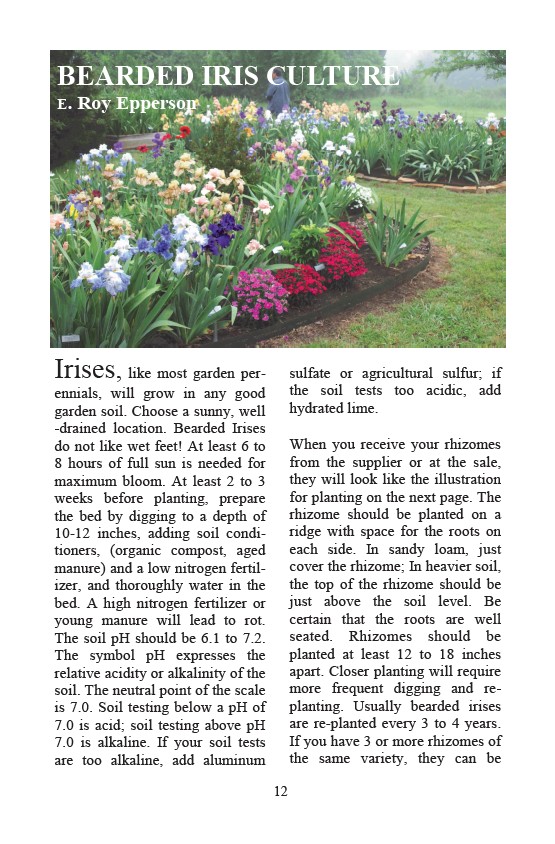
BEARDED IRIS CULTURE
E. Roy Epperson
12
Irises, like most garden per-ennials,
will grow in any good
garden soil. Choose a sunny, well
-drained location. Bearded Irises
do not like wet feet! At least 6 to
8 hours of full sun is needed for
maximum bloom. At least 2 to 3
weeks before planting, prepare
the bed by digging to a depth of
10-12 inches, adding soil condi-tioners,
(organic compost, aged
manure) and a low nitrogen fertil-izer,
and thoroughly water in the
bed. A high nitrogen fertilizer or
young manure will lead to rot.
The soil pH should be 6.1 to 7.2.
The symbol pH expresses the
relative acidity or alkalinity of the
soil. The neutral point of the scale
is 7.0. Soil testing below a pH of
7.0 is acid; soil testing above pH
7.0 is alkaline. If your soil tests
are too alkaline, add aluminum
sulfate or agricultural sulfur; if
the soil tests too acidic, add
hydrated lime.
When you receive your rhizomes
from the supplier or at the sale,
they will look like the illustration
for planting on the next page. The
rhizome should be planted on a
ridge with space for the roots on
each side. In sandy loam, just
cover the rhizome; In heavier soil,
the top of the rhizome should be
just above the soil level. Be
certain that the roots are well
seated. Rhizomes should be
planted at least 12 to 18 inches
apart. Closer planting will require
more frequent digging and re-planting.
Usually bearded irises
are re-planted every 3 to 4 years.
If you have 3 or more rhizomes of
the same variety, they can be